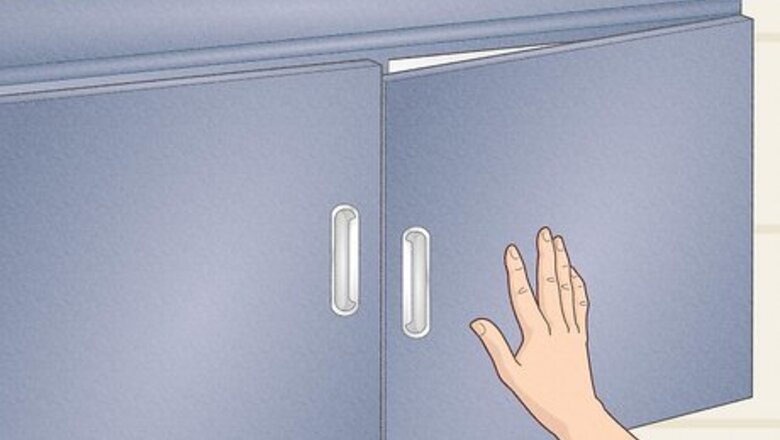
views
Why are my cabinet doors loose?
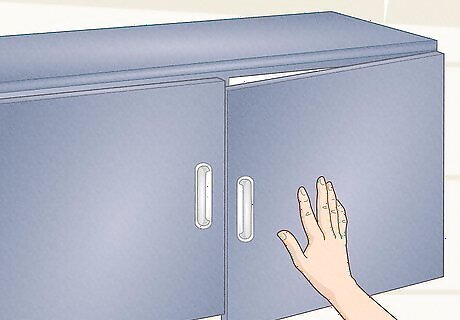
The hinge screws might be loose. Your cabinets experience plenty of wear and tear, especially if you’re opening and closing them frequently. Over time, the screws might loosen up, making your cabinet door seem loose or saggy.
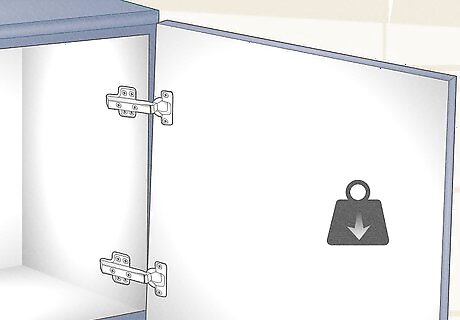
The door is too heavy for the hinges. In an ideal world, hinges help support and hold up your cabinet doors so they’re easy to open and close. However, if your cabinet door doesn’t have enough hinge support, it might start sagging.
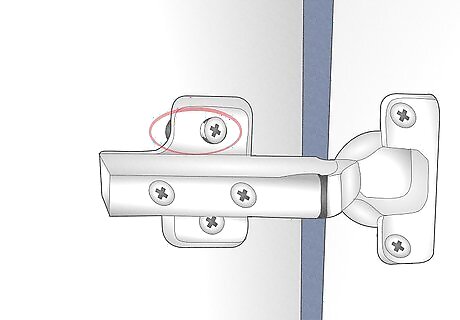
The screw holes are stripped. A “stripped” screw hole is a fancy term for a screw hole that is too big for the corresponding screw. When this happens, your cabinet door might seem loose.
How do you fix a loose or sagging cabinet door?
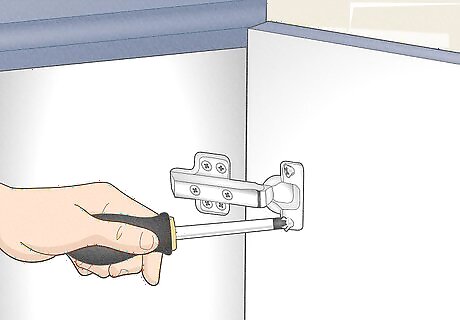
Tighten up the screws. Grab a screwdriver and tighten up each hinge. As you make adjustments, open and close the cabinet door as you normally would. Keep tightening and adjusting the screws until the door opens and shuts securely. If you notice metal shavings under your cabinet doors, your hinges likely need to be replaced.
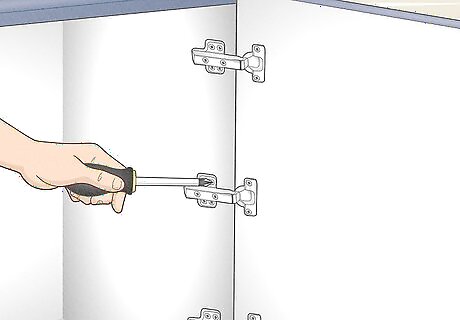
Install extra hinges if the door is too heavy. Stop by your local hardware or home improvement store and pick up another set of hinges. Then, remove the cabinet door from the unit and lay it on a flat surface. Screw the new sets of hinges along the side, so the cabinet door gets plenty of support. Once all the hinges are in place, reattach the door to the cabinet and tighten all the screws into place. Take a picture of your current hinges before heading to the store. This way, it’ll be easier to scope out a matching hinge. New hinges usually come with a template, which shows you where each hinge needs to go. Before reinstalling the door, reference the template and mark the cabinet where the new hinges will go.
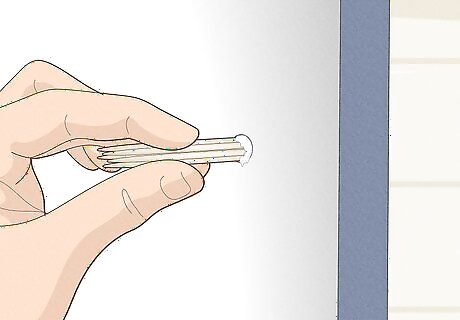
Fill in any stripped screw holes with toothpicks. Remove the cabinet hinges from the physical cabinet, leaving them still attached to the cabinet door. Set the cabinet door aside, and grab a container of toothpicks. Dunk the ends of several toothpicks in wood glue, and stick them directly into the stripped screw hole. Once the opening is completely filled, break off the ends of the toothpicks so the screw hole is level and flush with the rest of the cabinet door. Wait for the glue to dry completely, and then re-screw the cabinet hinges into the repaired screw holes. The toothpicks act like a new layer of wood. As you reinstall the cabinet hinges, the screw threads will get tightly embedded in the glued toothpicks.
How do you fix a hinge that breaks away from the cabinet door?
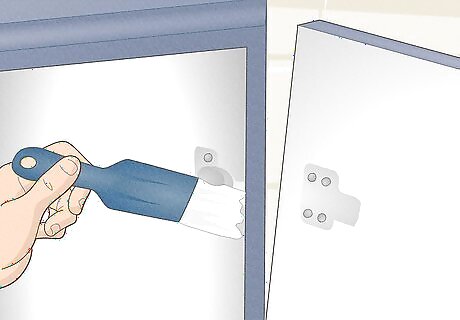
Remove the cabinet door and fill in the damaged surface. Grab a screwdriver and completely detach the door and hinges. Set the door aside, and pick up a container of wood filler. Apply the filler with a putty knife, spreading it all over the damaged area. Then, wait for the wood filler to cure completely. Check the packaging to see what the drying/curing time is.
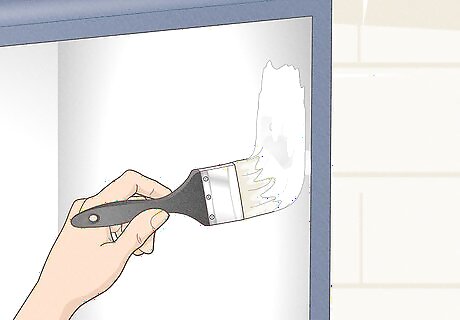
Sand and paint over the repaired section of the cabinet. Gently buff the dried filler, so the surface is smooth and flush with the rest of the cabinet. Then, paint over the filler so it blends in. Let the paint dry completely before you continue. Paint matching phone apps, like Behr and Sherwin-Williams, can help you pick out the best paint color for your cabinet. You could also take a picture of your cabinet and bring it to your local hardware or home improvement store for reference.
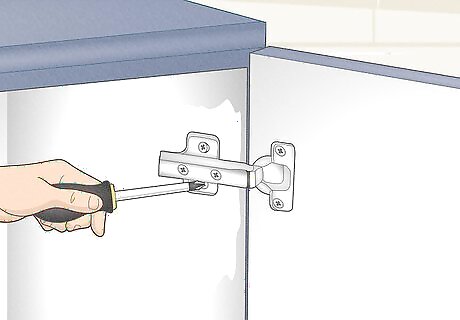
Reinstall your cabinet door with new hinges. If a hinge ripped off the cabinet, you’re better off replacing all of your hinges instead of working with the old ones. Unscrew the existing hinges and install the new set. Then, reattach the door to the cabinet. Try using a cabinet jig to easily line up the doors and hinges as you're reinstalling them.
How do you fix a cabinet hinge that won’t close?
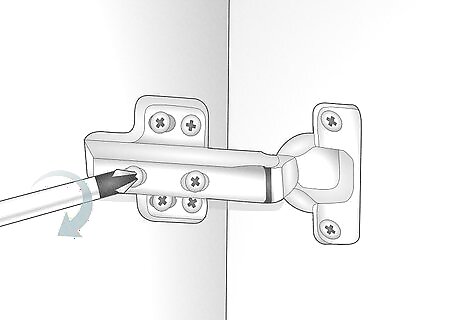
Turn the far left hinge screw clockwise. If your cabinet door isn’t closing all the way, your hinge is probably a little too loose. Find the section of the hinge that’s attached to your cabinet—there should be 2 screws next to one another in a horizontal line. To fix the hinge, simply grab a screwdriver and turn the leftmost screw clockwise. With a little tweaking, your cabinet door should close all the way!
How do you fix the gap between cabinet doors?
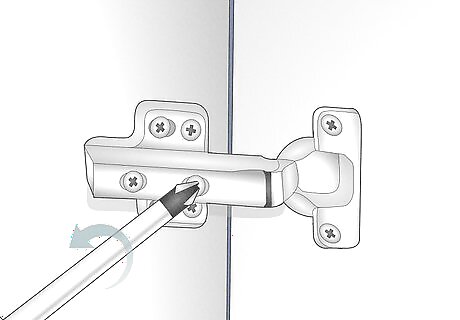
Inspect the outside of the cabinet to find the source of the problem. Find where the cabinet door meets the actual cabinet, and run your hand up the seam. The cabinet door should be smooth and flush against the cabinet without any obvious gaps. If you notice a gap forming, spot where the gap is widest. Then, open your cabinet door to find the corresponding hinge.
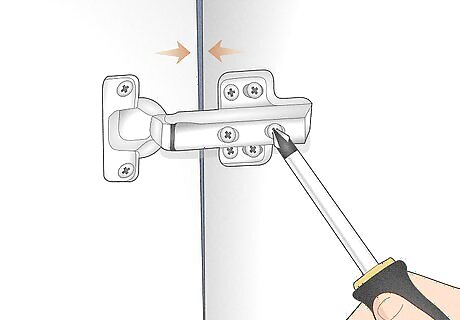
Adjust the far right hinge screw to realign the cabinet. Take a close look at your inner cabinet door—you should see 2 screws holding the hinge in place, set in a horizontal line. Turn this screw counterclockwise, which will shift the cabinet door over and eliminate the gap.




















Comments
0 comment